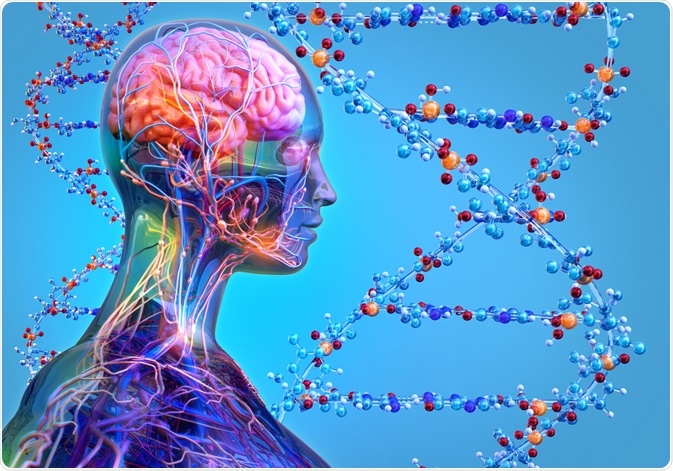Genotyping is an important scientific tool that has been developed over decades of research to help scientists determine the biological basis of the wide variation in phenotypes presented in those of the same species.

Image Credit: Corona Borealis Studio/Shutterstock.com
The applications of genotyping are vast, although it is strongly associated with research into human disease. Understanding how disease is linked with a person’s genotype is growing our knowledge of the establishment, development, and progression of disease as well as why people respond to treatment differently.
The progression of traditional genotyping methods towards automated genotyping techniques is helping to speed up the process of genotyping, making them less labor-intensive and reliant on valuable resources.
With automated genotyping, scientists can conduct the same genotyping tests in a fraction of the time with fewer costs associated (due to the reduction in resource allocation). The result is that genotyping is opening up to the wider scientific community as it becomes more easily adopted and simpler to incorporate in research.
The importance of genotyping
The idea of a genotype has existed since the beginning of the 20th century when Danish plant physiologist Wilhelm Johannsen coined the term along with the word ‘phenotype’ during his revolutionary plant experiments. Johannsen's work helped further our knowledge of how specific traits are inherited.
Modern genotyping is an experimental procedure that allows us to determine the difference in DNA sequence between individuals of the same species, or between distinct populations. Genotyping helps us to understand the connection between genotype and phenotype.
The process of genotyping determines the position of a genotype within the DNA sequence at certain positions. Genes relevant to traits or diseases can be identified through sequences variations, which act as markers.
It is understood that visible (phenotypic) differences between individuals are caused by a combination of inherited (genetic) and environmental factors. Genotyping helps scientists determine the role of genetics in certain phenotypes. It is particularly important in growing our understaffing of why disease establishes itself in one person and not another. It is also helping to develop our knowledge on why disease progression and response to therapeutics are specific to the individual. Thanks to genotyping, we now understand how individual genes are implicated in certain diseases.
A special focus has been given to understanding the role of genetic variants in disease. A genetic variant is determined as a genome that differs from a reference sequence derived from the general population or a subgroup. Variants can differ from the reference in several ways. Types of variation include copy number variation (CNV), insertions and deletions (indels), single nucleotide polymorphisms (SNPs), and single nucleotide variants (SNV).
Identifying such variants through genotyping is useful to several scientific fields. Over the years, this method of establishing a relationship between genotype to phenotype has been leveraged in many applications.
In addition to furthering our knowledge on human health, genotyping has been useful in the development of personalized medicine, the facilitation of plant and animal breeding via the selection of desired genotypes, tracing ancestry, tracking the origins of diseases, mapping evolution, testing family relationships (e.g. paternity tests), performing various forensic tests (e.g. identifying a victim), conducting pathogen typing and resistance screening, and monitoring biodiversity.
Genotyping is important for a wide range of applications, and the list continues to grow. There are numerous methods of carrying out genotyping, although the microarray technique is arguably the most common. However, all traditional methods of genotyping have their limitations, mainly that they are very time-consuming and resource-intensive. They require many hours of work from skilled members of staff. To overcome this limitation, scientists have been working on establishing an automated method of genotyping.
What is the Difference Between DNA Sequencing and Genotyping?
Automating the genotyping process
Back in the late 90s, scientists successfully developed a platform that could run automated polymerase chain reaction (PCR) tests. PCR is a technique used for genotyping that identifies SNPs. The method established in 1999 demonstrated an alternative to the traditional PCR method, speeding up the PCR process by analyzing one sample in less than seven minutes and analyzing 200 samples a day with just minutes of hands-on time required.
Quantitative PCR, however, is just one of the numerous techniques used for genotyping. Depending on the application genotyping is required for, different methods are used. The literature shows that automation of all such techniques used for genotyping are being developed or have been developed into updated, automated versions. This shift to automation is having a significant impact on the areas that are using genotyping.
For example, recent research has presented an automated genotyping platform for assigning genotypes for enteroviruses and noroviruses. This advancement is set to facilitate standardized genotyping across clinical and public health laboratories. Another recent project established a new platform capable of automatically performing PCR, taking just 60 to 90 minutes to complete genetic testing.
The establishment of automated methods will benefit various areas of research, particularly cancer research which is already using automated genotyping technology to analyze somatic mutations associated with cancer. In the coming years, we can expect further developments from automated genotyping.
Sources:
- Kuklin, A., Davis, A., Hecker, K., Gjerde, D. and Taylor, P., 1999. A novel technique for rapid automated genotyping of DNA polymorphisms in the mouse. Molecular and Cellular Probes, 13(3), pp.239-242. www.sciencedirect.com/science/article/abs/pii/S0890850899902396
- Kroneman, A., Vennema, H., Deforche, K., Avoort, H., Peñaranda, S., Oberste, M., Vinjé, J. and Koopmans, M., 2011. An automated genotyping tool for enteroviruses and noroviruses. Journal of Clinical Virology, 51(2), pp.121-125. www.sciencedirect.com/science/article/abs/pii/S1386653211001296
- Stakenborg, T., Liu, C., Henry, O., Borgen, E., Laddach, N., Roeser, T., Ritzi-Lehnert, M., Fermér, C., Hauch, S., O’Sullivan, C. and Lagae, L., 2010. Automated genotyping of circulating tumor cells. Expert Review of Molecular Diagnostics, 10(6), pp.723-729. https://www.tandfonline.com/doi/abs/10.1586/erm.10.66
- Suzuki, S., Komori, M., Hirai, M., Ureshino, N. and Kimura, S., 2012. Development of a Novel, Fully-Automated Genotyping System: Principle and Applications. Sensors, 12(12), pp.16614-16627. https://www.mdpi.com/1424-8220/12/12/16614
Further Reading
Last Updated: Oct 7, 2021